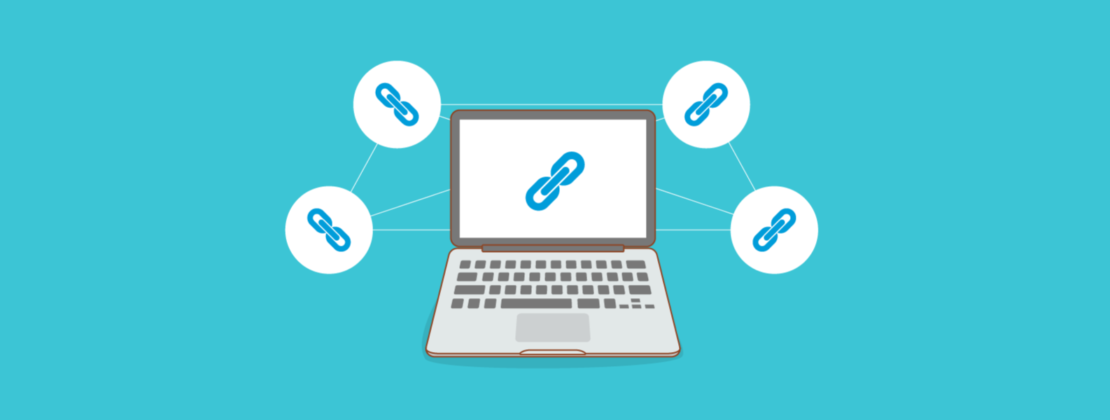When you consider link building, you probably think about guest posts and links on third party sites. That’s understandable because building backlinks to your site from authoritative domains is important for your search rankings. That’s unlikely to change. However, internal link building also plays an important role in determining where a piece of content ends up in search rankings.
This guide will focus on how to master internal linking. I’ll share a step-by-step strategy you can apply to review and optimize your internal links, alongside some tips, insights, and best practices. Let’s dive into the guide.
Content:
- What are internal links, and why do they matter?
- How to implement an effective internal linking strategy
- Review your menu and footer links
- Create a list of important pages and frequent search terms
- Review and update your content
- Three internal linking tips to improve the user experience
- Consider the purpose of the link
- Vary anchor text distribution
- Review user flow and internal search terms
- Bottomline
What are internal links, and why do they matter?
Internal links are hyperlinks that go from one part of your domain to another on the same site. Internal links are generally used in menus and commonly found in the sidebar, footer, and within articles on your website.
You use internal links to:
- allow a user to navigate your website;
- help establish an information hierarchy;
- spread the power of your PageRank.
Ideally, all of the content on your website should be within easy reach of the homepage. Implemented correctly, users will find it easy to navigate your site and organically find content that interests them.
As I mentioned, Google uses internal links to navigate and map your website.
The image below is from a website crawl. The various nodes correspond to information hubs on certain topics. You can see how the dots on these nodes are tightly connected, which means there are many internal links within the content clusters.

The image above is a great example of a well-organized website. There are lots of internal links between the content, and the content is organized into hubs.
If you create great content and provide useful links to visitors, people will stay on your site longer, and you’ll have a low bounce rate. On top of this, a great internal linking strategy will help all of the pages on your site rank higher in the search results by spreading PageRank.
How to implement an effective internal linking strategy
I’ve tried to explain how internal links work, why they are essential to the user experience, and how they impact your SEO rankings. In the next section, I want to share a step-by-step strategy that you can apply to your business that will help you optimize your internal links.
Review your menu and footer links
Sitewide links are links that are accessible anywhere on your site. You will find sitewide links in the header, footer, and sidebar of a website. These resources are also the entry point for people navigating through your site.
To determine the most relevant pages, make a list of the most critical content on your site. Important content will likely include your sales pages, content hubs, and resource pages.
Compare this list against the links you’ve included in your header, footer, and sidebar. If you are missing any pages, update your menu or footer as appropriate.
Your main menu should contain the most critical pages on your site.
The most important resources should be on the left side of the menu. If you don’t know how to organize your menu, check out other sites in your niche — preferably your most successful competitors. Regardless of your site’s size, the menu should be intuitive to navigate and allow you to access the content you want fast.
A great example of a site that has mastered intuitive navigation is Amazon.
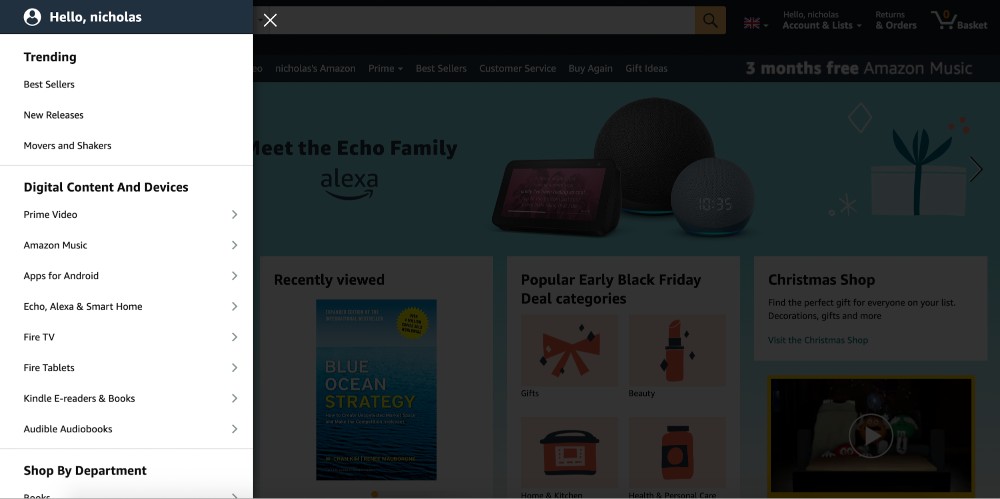
Despite the millions of pages of content the site has, it’s incredibly easy to navigate. You want to provide that ease of use to your visitors.
The second thing you should review is your footer links.
Footer links are less critical than menu links because fewer people use them for navigation. The number of links you include in the footer should be greater than the links in your menu.
Create a list of important pages and frequent search terms
Once you’ve optimized your menu and footer links, create a Google Sheet. List all of the URLs that you included in your menu and the footer. Then, head over to Google Search Console.
Do the following:
- Access the “Performance” tab from the menu, and choose “Search Results.”
- Click on “Pages.” By default, you will see a list of your 25 most popular pages.
- Click on “Queries” to see what terms people used to find your site.
List the 5-7 most popular terms for each of the URLs for each of the pages. Then, list the pages where you want to improve your search rankings and the relevant search terms.
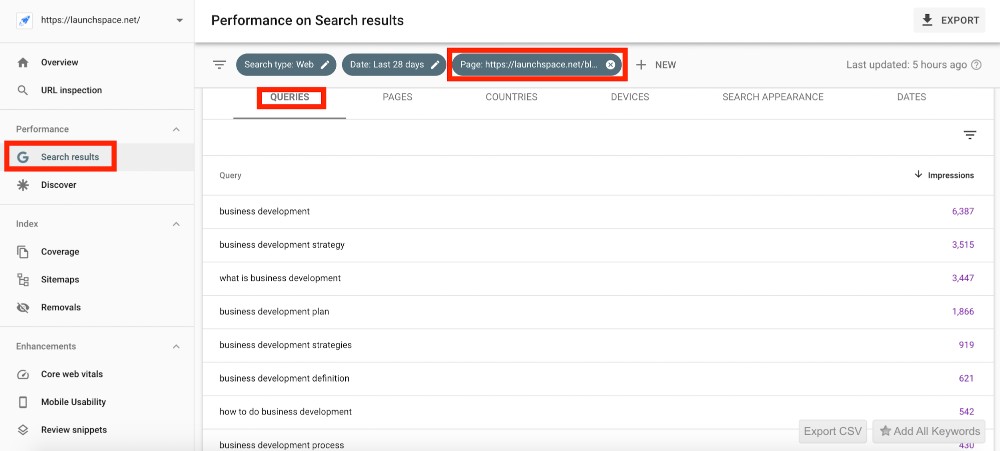
Above is a screenshot from my Search Console with a list of terms for a page.
You can repeat this process by looking at the most popular entry points to your website. These are the pages that most people visit from search engines, social media, and other sources.
Now, make a list of all the sitewide entry points around your site. Your job is to create a site structure where you logically link thematic content together.
Review and update your content
Creating a system to manage interlinking on your site is complicated, but it’s important if you want to profit from your blog. You should start with the most important content for your business, which is why I recommended creating an initial shortlist of pages to review.
You will then have to review each piece of content manually. As you review the content, do the following:
- Make a list of thematically relevant pages to reference.
- Ensure you link to the content using appropriate anchor text.
Updating your content is a time-consuming and challenging process. You’ll need to make changes to your content so you can add internal links. Then, you need a system to monitor everything.
I have a master Google Sheet to track internal links on my site.
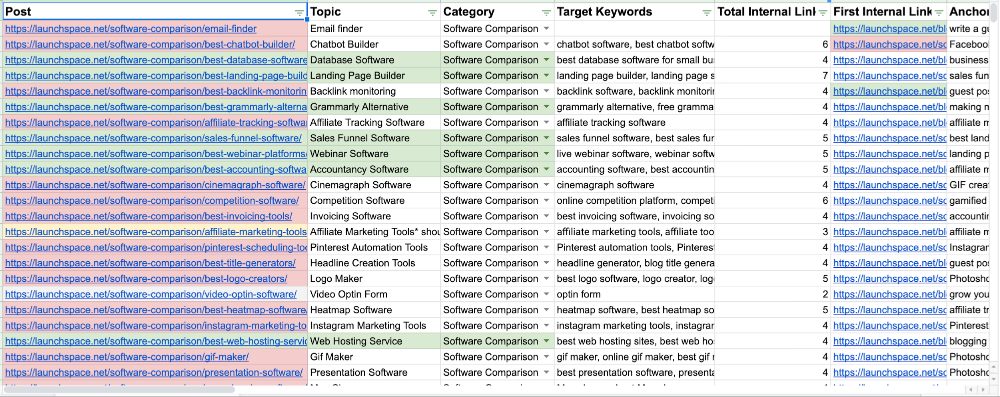
The sheet provides me with an “at a glance” overview of relevant anchor text to use and the internal links I’m using on each page. I prefer to use Google Search Console to track total links and anchor text variance as it has an intuitive UI.
The information I shared above provides a basic framework for optimizing the internal linking for top tier content.
If you’re happy using spreadsheets and diving into data, invest in a site crawler like Screaming Frog. You can use a tool like Screaming Frog to crawl all of the content on your site. The great thing about Screaming Frog is that it provides you with a list of all the URLs on your site and information like crawl depth — how far away a piece of content is from your homepage.
Tools like Screaming Frog also allow you to visualize your site architecture. A bit like the image that I shared earlier, with the green, yellow, and orange dots.
Three internal linking tips to improve the user experience
I purposefully provided a light overview of how to update your content. Managing your internal links is a complicated process. The volume of data you need to deal with can easily leave you feeling overwhelmed.
Fundamentally, though, if you take things in bite-sized chunks, internal linking is straightforward. In this section, I’ll share three tips to keep at the top of your mind as you make updates to your content.
Consider the purpose of the link
Good internal linking helps raise your site’s user engagement. When a user encounters a relevant resource, they are more likely to click through. If the links are useful, visitors will stay longer on your site and are less likely to return to Google and search for an alternative resource.
As you review existing content or create fresh content, consider the link’s value and what you want the person to do on the page. You’ll want to include some links on your page, purely for SEO value. On the other hand, there will be resources that you want people to click.
Consider these two examples:
- You can add relevant anchor text to your content.
- I touched on why anchor text is important. Read this post on anchor text to access five hacks that will help improve your search rankings.
Do you notice the difference?
Without an introduction, people glide over internal links. If you’re purely adding internal links for the SEO value, that’s fine. However, you must signpost links you want people to click.
Vary anchor text distribution
Anchor text is the clickable text in a hyperlink. As I mentioned, the anchor text you use contextualizes the resource you are referencing. The anchor text also has SEO value because it provides Google with contextual information about the resource.
When considering your anchor text distribution, review what is working for your competitors. You can use an SEO tool like Ahrefs to analyze sites ranking for your target search term. Consider the following:
- the number of internal links;
- internal anchor text distribution.
For example, if you see a pattern, the average number of internal links, imitate their approach.
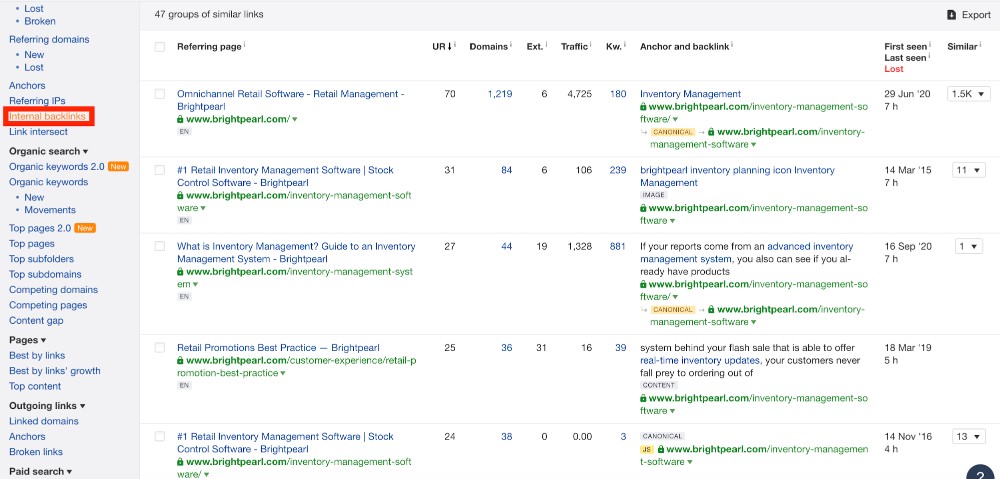
Earlier in this guide, I showed you how to identify relevant search terms people are using to find your site through Google Search Console. I suggest you use these phrases for your anchor text, in addition to the phrases you identified through competitor analysis.
Review user flow and internal search terms
The first time you create internal links for a piece of content, you are probably working on instinct. That’s fine. Initially, you don’t have access to data to back up your assumptions about what people find useful. However, you gain access to this data over time.
When you are conducting a review of your internal link strategy, use an analytics tool to analyze your site’s user journey. I use Google Analytics.
Through Google Analytics, you can analyze how long people spend on a page and what they do when they arrive. You can access information about the visitor journey through the behavior flow dashboard.
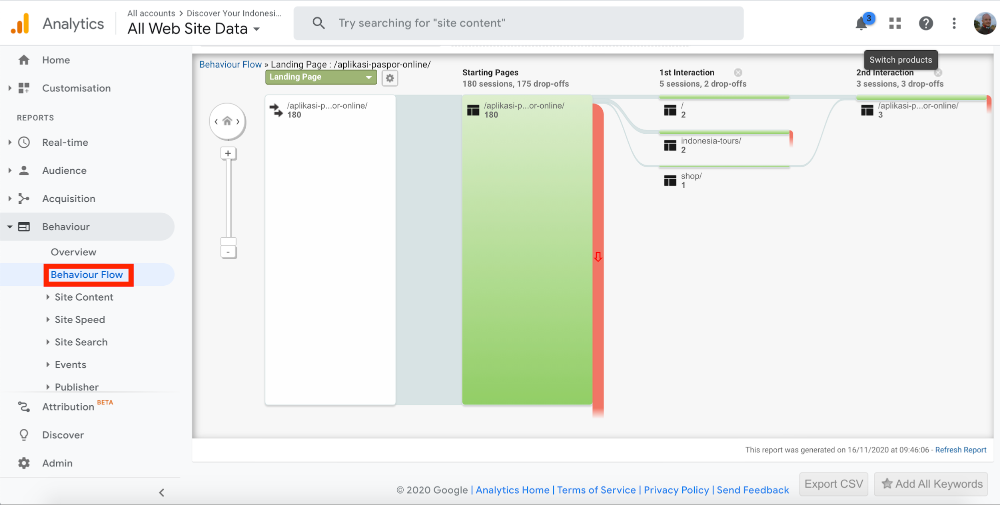
Through this dashboard, you can see where people click on your site. Use this data to review your content and improve your internal linking. Over time, through trial and error, you can implement changes that improve visitor engagement and reduce page bounce rate.
A review of the search terms people use on your site also provides insights on content people want to access and struggle to find. You can use these insights to improve your internal linking.
Bottomline
If you want to improve your website’s user experience, you must spend time improving and optimizing your internal link structure. Internal links help visitors navigate your site, provide an information hierarchy for your content, and spread the power of PageRank around your site.
In this guide, I shared a strategy for auditing your internal links and some tips you can follow when making changes to your content. Take this approach in stages. Start by auditing your sitewide links and the most popular content on your site. As you see improvements to your site traffic and improved user experience, expand the scope of your review.
If you follow the best practices we’ve discussed, your site will get the ranking and traffic it deserves. Implementing these tips will help improve user experience, which can help boost your company profits.
